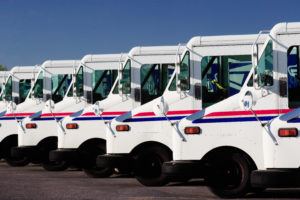IDC HPC Forum
9/6/16 – 9/8/16

In the digital age, modern enterprises are under immense pressure to deliver fast, secure, and cost-effective services. Faced with increasingly limited resources and progressively tech-savvy customers, the United States Postal Service (USPS) is tasked with efficiently processing, tracking, and delivering mail on a limited budget.
In an effort to streamline operations, lawmakers sanctioned the Postal Accountability and Enhancement Act of 2006 to address the technological deficiencies of the current system. The Act called for upgrades to the archaic server and storage platforms, and the adoption of Big Data techniques to improve the ability to respond to market dynamics, enhance competitive practices, and accelerate the delivery process. These advancements increased operational efficiencies, lowered costs, supported data-driven decision-making, and bolstered mail security.
According to International Data Corporation (IDC), high-performance data analysis (HPDA) is one of the most daunting challenges of the digital era. The ability to effectively gather and enact on Big Data is non-negotiable for enterprises vying for competitive advantage. IDC forecasts that the demand for HPDA-capable platforms will skyrocket over the next few years, growing from $1.4 billion in 2013 to $4.3 billion in 2018.
In order to fully optimize data usage, the USPS is rapidly replacing its traditional computing infrastructure with revolutionary high-performance computing (HPC) solutions. Kinetica, an in-memory database backed by Hewlett Packard Enterprise servers, is helping the USPS channel the power of massively distributed graphics processing units (GPUs) to track the location of employees and individual pieces of mail in real-time.
Promising a 100 to 1,000X rise in analytic performance at 10 to 25% the cost of traditional data platforms, Kinetica uses visualizations that enable businesses to support larger and more complex data workloads and quickly process, store, and enact on information in order to make critical decisions based on live data. This IT transformation has given the transportation and logistics industry significant traction through enhanced safety, efficiency, and services without overspending. Today, Kinetica supports 15,000 concurrent users and analyzes data from more than 213,000 scanning devices in order to streamline business processes. In 2015 alone, the USPS delivered 150 billion pieces of mail while driving 70 million fewer miles and saving 7 million gallons of fuel. This dynamic achievement earned Kinetica the IDC’s HPC Innovation Excellence Award in June 2016.
According to a 2016 case study published by Kinetica, the database improved postal operations in a variety of ways:
The USPS is now on its third generation of supercomputers, realizing greater efficiencies and cost-savings with each generation. The most successful organizations are investing heavily in HPC and Big Data solutions in order to tackle challenging data workloads that traditional IT cannot effectively manage. The implementation of Kinetica is expected to save the USPS millions of dollars in the years to come, and help them deliver more sophisticated services, achieve more accurate tracking capabilities, ensure safer, on-time deliveries, and drive efficiencies to operations.